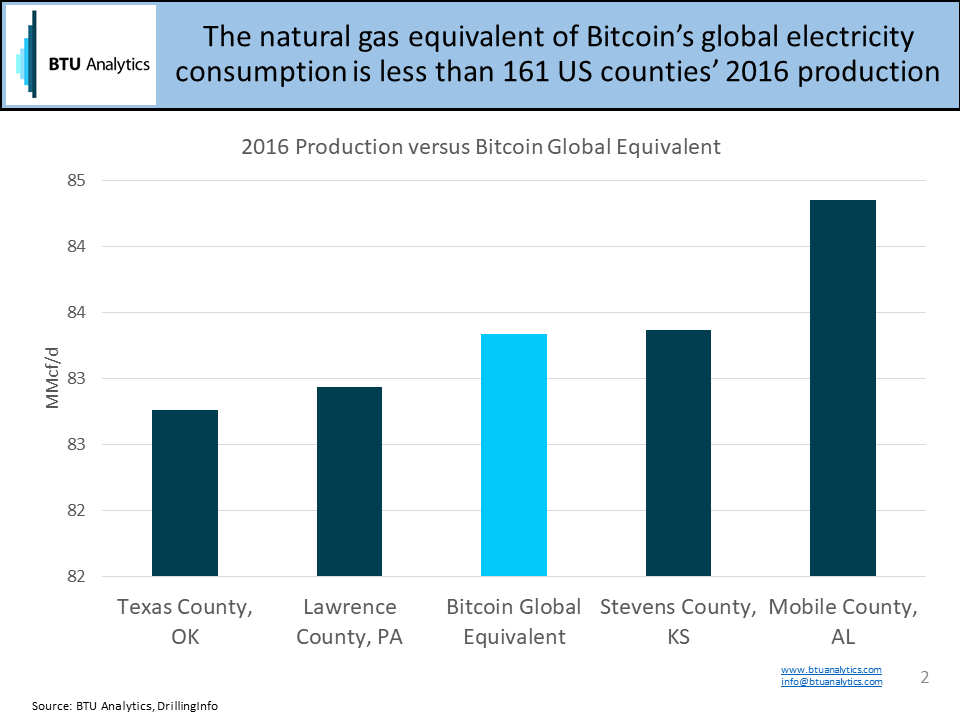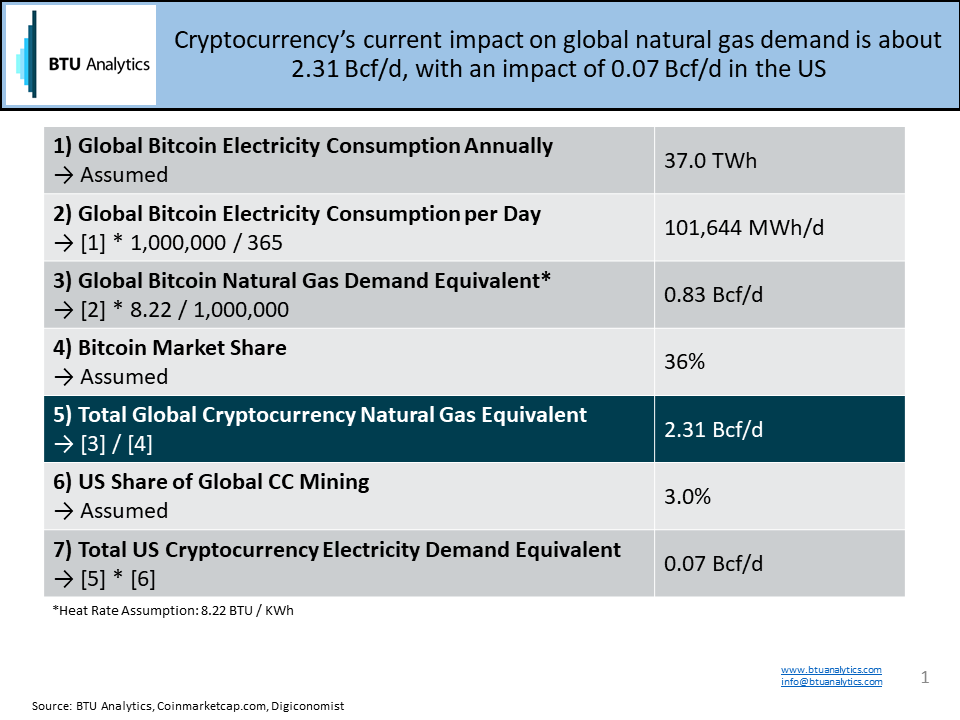Cryptocurrency (CC) mania has sprawled into our daily lives, consuming headlines, airtime, and social media feeds. Bitcoin leads the charge, with about 36% of the CC market according to one website (coinmarketcap.com). One of the more popular peripheral topics is the electricity that Bitcoin consumes (if you’re looking for a deep rabbit hole to explore, google “Bitcoin Electricity Use”). An article published by CNBC recommended buying several US-based natural gas-related investments to profit from Bitcoin-related electricity demand, which prompted the question, is CC mining a serious potential source of new natural gas demand? Fair warning, the CC data used for the analysis in this commentary relies upon several unverified sources.
Quantifying Cryptocurrency Impacts
There is more information available for Bitcoin than other CCs, so this analysis will use Bitcoin data for some assumptions. Digiconomist’s estimate of Bitcoin electricity consumption is the most widely cited online, so let’s start with that. Their current estimate, which is available daily here, is about 37 TWh per year. Other sources estimate that the actual consumption is half of that amount, but to get an idea of the upside, we’ll use 37 TWh as a baseline.
Assuming all Bitcoin related electricity demand was generated by natural gas, the natural gas demand equivalent of global impact would be approximately 2.31 Bcf/d. Most Bitcoin mining currently happens overseas, with China being the dominant player, but some estimates peg the US share of Bitcoin mining at 3%. Using that assumption, total US CC demand equivalent would be 0.07 Bcf/d, or 0.1% of Lower 48 US supply. If supply was a football field, CCs would currently account for 4 inches out of the full 300 feet (longer than many of my beloved Broncos’ drives).

More Than Bitcoin: The Entire Cryptocurrency Market Matters
BTU Analytics published an analysis showing that coal plants at risk of retirement in the US in 2018 could exceed 40 GW, about 9.5 times Bitcoin’s global impact. In 2016, 161 counties in the US produced more natural gas than required for Bitcoin.

Bitcoin alone does not currently seem to be a catalyst for extended natural gas demand growth, but we aren’t ready to conclude that the combined momentum of the entire CC market lacks the potential to drive demand for natural gas. If the CC market continues growing, gas-fired generation grows worldwide, and the US continues to be a marginal source of natural gas to the globe, CC could provide upside to US gas producers.
What’s the Play?
This analysis focused mainly on the current impact of the CC market, but it’s far more crucial to understand how market-moving trends will develop. BTU Analytics specializes in fundamental energy market analysis, providing our clients with insights and forecasts on factors that influence oil, gas, and NGL markets. To find out when and why we see the market changing, check out our latest Henry Hub Outlook. If you’ll be in Houston on February 22, check out our cutting-edge insights in person at our What Lies Ahead conference (price increase coming on Friday, Jan 5).
For our New England clients looking for a silver lining here, even though AGT Citygate pricing breached $50/MMBtu recently, that’s only 0.003 Bitcoin.









